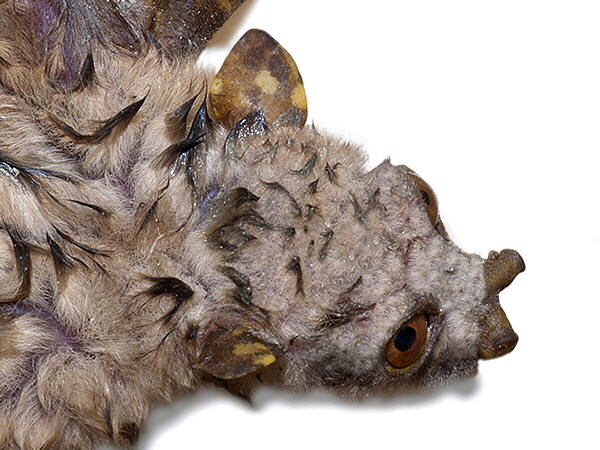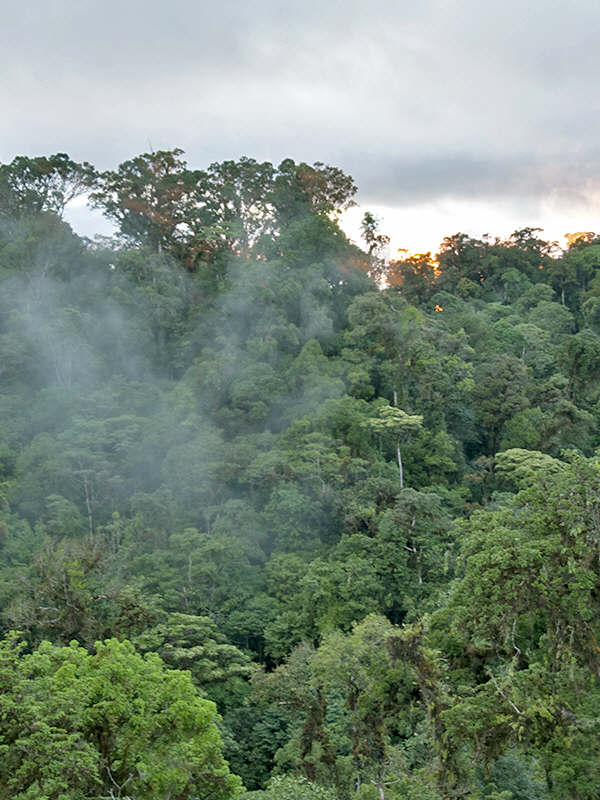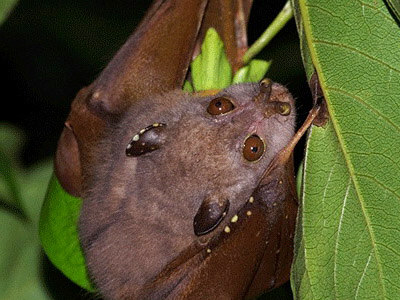
Fig 1

Fig 2
 |
Order : CHIROPTERA
Family : Pteropodidae
Species : Nyctimene & Paranyctimene spp.
Forearm Length :
up to 8.8 cm (e.g. N. aello & N. major)
Weight : up to 100 grams (e.g. N. aello & N. major)
Tube-nosed fruit bats occur in a wide range of habitats
including lowland primary and secondary forest, hill and montane forest,
swamp forest, agricultural areas and Melaleuca savannah. However,
they are most common in moist, lowland habitats.
As of 2020, 19 species are
recognised of which 13 occur within eastern parts of Southeast Asia,
including the central Philippines, Sulawesi, eastern Indonesia and western
New Guinea. They are absent from Borneo. Other species range further east to
the Bismarck Archipelago and the Solomon Islands in the western Pacific
Ocean, and north-east Australia.
Nyctimene (and Paranyctimene) bats possess elongated,
Y-shaped, tubular nostrils which measure up to 6 mm in length and which splay
obliquely from the front of the snout: the angle between the two nostrils is
greater than 90 degrees.
Most species have coarsely mottled, yellow and brown wings, ears and nose which
acts as excellent camouflage when roosting. Most have a dark
mid-dorsal stripe, either narrow or broad. Their fur, which may be
woolly in montane species, is buffy grey, brown or yellow-brown above, and
pale below. They have short, naked tails typically around 2 cm in length.
Their diet comprises mainly figs, but a variety of small fruits may also be
consumed. Small insects attracted to ripe fruits are sometimes incidentally consumed.
Typically the choicest fruit or fig is selected after dusk, and is carried
off to a favoured feeding roost away from other bats (Bonaccorso,
1998).
By day these bats roost unseen amongst living foliage, and most appear quite
solitary in habits.
Females bear a solitary young: data from Papua New Guinea suggests they may
give birth twice a year (Bonaccorso,
1998).
Nyctimene albiventer is one of the commonest species (see Figure 1):
it occurs in eastern Indonesia (Halmahera, Waigeo and nearby islands), New
Guinea and the Bismarck Archipelago. The variety of forms and wide
geographic and altitudinal range of this species, which occurs in lowlands
and montane habitats up to 1900 metres elevation,
probably indicates a species complex (Aplin & Armstrong, 2019).
Fig 1 : Common Tube-nosed Fruit Bat Nyctimene albiventer from Southern Highlands province, Papua New Guinea
from lower montane forest at 1300 metres elevation. This rescued bat was
found wet, cold and disoriented.
Fig 2 : Lower montane forest in central New Guinea: the bat in Figure 1 was
from this area.
Fig 3 : Eastern Tube-nosed Fruit Bat (Nyctimene robinsoni) from
eastern Australia. Note the yellow spots on the ears and wings, and the
narrow, dark vertebral line. Photo thanks to Alan Wynn.
References :
Aplin, K. & Armstrong, K. 2016. Nyctimene albiventer. The IUCN
Red List of Threatened Species 2016: e.T14962A22007665
Bonaccorso, F.J., 1998. Bats of Papua New Guinea. Conservation
International, Tropical Field Guide Series 2.
|